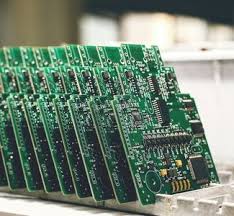Quicker and More Efficient production
Automated machinery in PCB manufacturing has helped make printed circuit board production much faster. Older PCB fabrication processes had many manual steps that were prone to human error and slow. However, the advent of automation in machinery has largely expedited these processes. One example: automated assembly lines can place components at more than 50,000/hr compared with manual placement rates of fewer.Than 500/hr. This change not only increases the output and productivity rate but also helps to improve all-over efficiency of manufacturing.
Improved Precision and Accuracy
Precision in PCB manufacturing is easily one of the most important advantages provided by automation. Automated machines are generally very accurate, with most work being done within ±0.025mm tolerances. An accuracy of this sort is crucial for the modern electronics, where components are shrunk more and more. Machines are also able to make the exactly identical board for multiple times with very minor variance creating consistency in production and reducing number of errors compared to manual production. This translates to increased number of quality PCBs and less resources wasted in phase 2, intended to as defect correction.
Cost Reduction
Reliable, robust PCB manufacturing automation yields great cost advantages. While the upfront cost of automated equipment is high, the long-term savings are monumental. Since less number of hands are required to monitor the production, labor costs minimizes. In addition, automation reduces material waste because of greater accuracy in jobs such as application and placement of solder paste for components. Moreover, high throughput and reproducibility means lower price points = more economically feasible for large number manufacturing.

Adaptability and Scalability
Details — The level of adaptability and scalability in PCB manufacturing is amazing Today, automation technology has evolved. It is important to note that the sophisticated software in today's automated systems facilitates flexible reprogramming for different board designs and reduces down time. This flexibility is vital for manufacturers that change from one PCB type and size to another quickly. Another benefit is scalability: the same systems can increase output by running longer hours or adding more machines with little to no retraining of people required.
Challenges and Perspectives
While there are several advantages the automation brings to PCB manufacturing, they should be in conjunction with some challenges. Costs: The build-out and installation of automated lines are extensive (and expensive) upfront investments, which can put them out of reach for smaller scale manufacturers. In addition, the use of advanced technologies implies a need for personnel able to ensure their maintenance and programming, which could be an obstacle in regions with low human resources.
Automation in PCB manufacturing holds a promising future<()> Additionally, the improvement of artificial intelligence and machine learning will increase the efficacy with which automated systems are able to operate in a more intuitive fashion. It is inevitable that more automated solutions grafted on PCB manufacturing will be achieved as technology matures, which guarantees an even higher degree of accuracy, efficacy and low-cost.
In summary, automation is changing the face of PCB manufacturing and has various benefits from increased efficiency, accuracy, cost savings to scalability. There are challenges, but the promise is exciting; this is a rapid evolution to watch in electronics manufacturing.